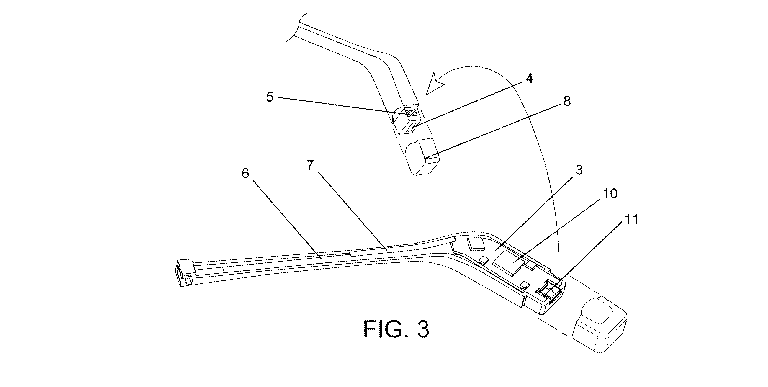Some of the information on this Web page has been provided by external sources. The Government of Canada is not responsible for the accuracy, reliability or currency of the information supplied by external sources. Users wishing to rely upon this information should consult directly with the source of the information. Content provided by external sources is not subject to official languages, privacy and accessibility requirements.
Any discrepancies in the text and image of the Claims and Abstract are due to differing posting times. Text of the Claims and Abstract are posted:
| (12) Patent Application: | (11) CA 3103521 |
|---|---|
| (54) English Title: | GEOLOCATABLE EYEGLASSES |
| (54) French Title: | LUNETTES GEOLOCALISABLES |
| Status: | Deemed Abandoned and Beyond the Period of Reinstatement - Pending Response to Notice of Disregarded Communication |
| (51) International Patent Classification (IPC): |
|
|---|---|
| (72) Inventors : |
|
| (73) Owners : |
|
| (71) Applicants : |
|
| (74) Agent: | BROUILLETTE LEGAL INC. |
| (74) Associate agent: | |
| (45) Issued: | |
| (86) PCT Filing Date: | 2018-06-12 |
| (87) Open to Public Inspection: | 2019-12-19 |
| Availability of licence: | N/A |
| Dedicated to the Public: | N/A |
| (25) Language of filing: | English |
| Patent Cooperation Treaty (PCT): | Yes |
|---|---|
| (86) PCT Filing Number: | PCT/ES2018/000054 |
| (87) International Publication Number: | ES2018000054 |
| (85) National Entry: | 2020-12-11 |
| (30) Application Priority Data: | None |
|---|
The invention relates to geolocatable spectacles, comprising a frame (8) to which a temple (7) is connected, via hinges (9), on each side of the frame (6), wherein at least one temple comprises a geolocation device, wherein the geolocation device is built into the temple, and wherein the geolocation device comprises an antenna (8) built into the temple (2), configured to connect to at least one global navigation system, a control board (3), a plug (4) and a switch (5) configured to activate or deactivate the geolocation device; wherein the switch is formed by a graphene surface, which is on the same level as the surface of the temple (2).
L'objet de l'invention se rapporte à des lunettes de localisation, qui comprennent une monture (8) à laquelle sont reliées par des articulations (9) une branche (7) de chaque côté de la monture (6) où au moins une branche comprend un dispositif de géolocalisation, lequel dispositif de géolocalisation comprend une antenne (8) intégrée dans la branche (2) configurée pour se raccorder à au moins un système de navigation mondial, une plaque de commande (3), une prise (4), un interrupteur (5) configuré pour activer ou désactiver le dispositif de géolocalisation où l'interrupteur est formé par une surface en graphène, qui se situe au même niveau que la surface de la branche (2).
Note: Claims are shown in the official language in which they were submitted.
Note: Descriptions are shown in the official language in which they were submitted.

2024-08-01:As part of the Next Generation Patents (NGP) transition, the Canadian Patents Database (CPD) now contains a more detailed Event History, which replicates the Event Log of our new back-office solution.
Please note that "Inactive:" events refers to events no longer in use in our new back-office solution.
For a clearer understanding of the status of the application/patent presented on this page, the site Disclaimer , as well as the definitions for Patent , Event History , Maintenance Fee and Payment History should be consulted.
| Description | Date |
|---|---|
| Inactive: Office letter | 2024-03-28 |
| Application Not Reinstated by Deadline | 2023-12-13 |
| Time Limit for Reversal Expired | 2023-12-13 |
| Deemed Abandoned - Failure to Respond to a Request for Examination Notice | 2023-09-25 |
| Letter Sent | 2023-06-12 |
| Letter Sent | 2023-06-12 |
| Deemed Abandoned - Failure to Respond to Maintenance Fee Notice | 2022-12-13 |
| Letter Sent | 2022-06-13 |
| Common Representative Appointed | 2021-11-13 |
| Inactive: Cover page published | 2021-01-20 |
| Letter sent | 2021-01-11 |
| Application Received - PCT | 2020-12-30 |
| Inactive: IPC assigned | 2020-12-30 |
| Inactive: IPC assigned | 2020-12-30 |
| Inactive: First IPC assigned | 2020-12-30 |
| National Entry Requirements Determined Compliant | 2020-12-11 |
| Amendment Received - Voluntary Amendment | 2020-12-11 |
| Small Entity Declaration Determined Compliant | 2020-12-11 |
| Application Published (Open to Public Inspection) | 2019-12-19 |
| Abandonment Date | Reason | Reinstatement Date |
|---|---|---|
| 2023-09-25 | ||
| 2022-12-13 |
The last payment was received on 2021-05-20
Note : If the full payment has not been received on or before the date indicated, a further fee may be required which may be one of the following
Patent fees are adjusted on the 1st of January every year. The amounts above are the current amounts if received by December 31 of the current year.
Please refer to the CIPO
Patent Fees
web page to see all current fee amounts.
| Fee Type | Anniversary Year | Due Date | Paid Date |
|---|---|---|---|
| MF (application, 2nd anniv.) - small | 02 | 2020-06-12 | 2020-12-11 |
| Basic national fee - small | 2020-12-11 | 2020-12-11 | |
| MF (application, 3rd anniv.) - small | 03 | 2021-06-14 | 2021-05-20 |
Note: Records showing the ownership history in alphabetical order.
| Current Owners on Record |
|---|
| PAUVAZAL, S.L. |
| Past Owners on Record |
|---|
| ALBERTO PAULET VAZQUEZ |